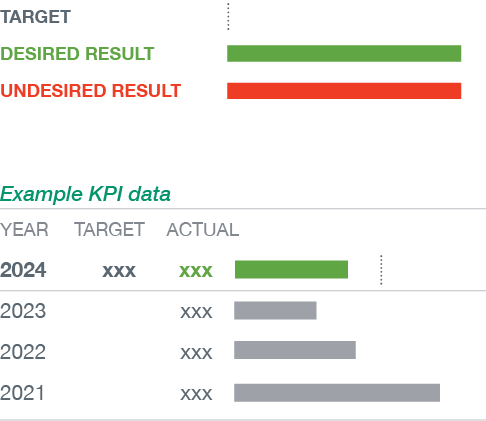Certification of Key Performance Indicators
East Metropolitan Health Service
Certification of Key Performance Indicators for the year ended 30 June 2025
We hereby certify that the key performance indicators are based on proper records, are relevant and appropriate for assisting users to assess East Metropolitan Health Service’s performance and fairly represent the performance of the health service for the financial year ended 30 June 2025.
Pia Turcinov AM
Board Chair
East Metropolitan Health Service
8 September 2025
Melissa Grove
Chair, EMHS Board Audit and Risk Committee
East Metropolitan Health Service
8 September 2025
KPIs
Outcomes
Key Performance Indicators (KPIs) assist East Metropolitan Health Service (EMHS) to assess and monitor achievement of the following Department of Health outcomes.
Outcome one:
Public hospital-based services that enable effective treatment and restorative healthcare for Western Australians.
Outcome two:
Prevention, health promotion and aged and continuing care services that help Western Australians to live healthy and safe lives.
KPI data legend

Introduction
In 2024-25, EMHS continued to face substantial expenditure pressures driven by several compounding factors, including award-related wage increases, elevated medical and nursing salaries, increased reliance on locums and visiting specialists, and broader inflationary impacts from the cost-of-living environment. These pressures were further intensified by the implementation of government wage policies and investments in safer service initiatives designed to enhance patient care and security.
Across core service delivery areas such as admitted, emergency, and outpatient care, the Health Service experienced growing demand and activity, which came at a higher cost. These areas reported rising average costs that exceeded prior years, reflecting challenges in maintaining efficiency amidst escalating workforce and supply costs.
Admitted mental health services also experienced increased cost pressures, primarily due to temporary bed closures for capital and safety-related works, which reduced activity throughput and in turn raised unit costs. However, EMHS demonstrated strong performance in non-admitted mental health services, maintaining efficiency and delivering care within community settings despite the higher resource needs associated with these models of care.
Despite a challenging fiscal environment, EMHS remains committed to delivering safe, high-quality care while responding to increasing complexity and demand across all areas of service. The Health Service continues to focus on improving efficiency and sustainability without compromising the wellbeing of patients and the workforce.
